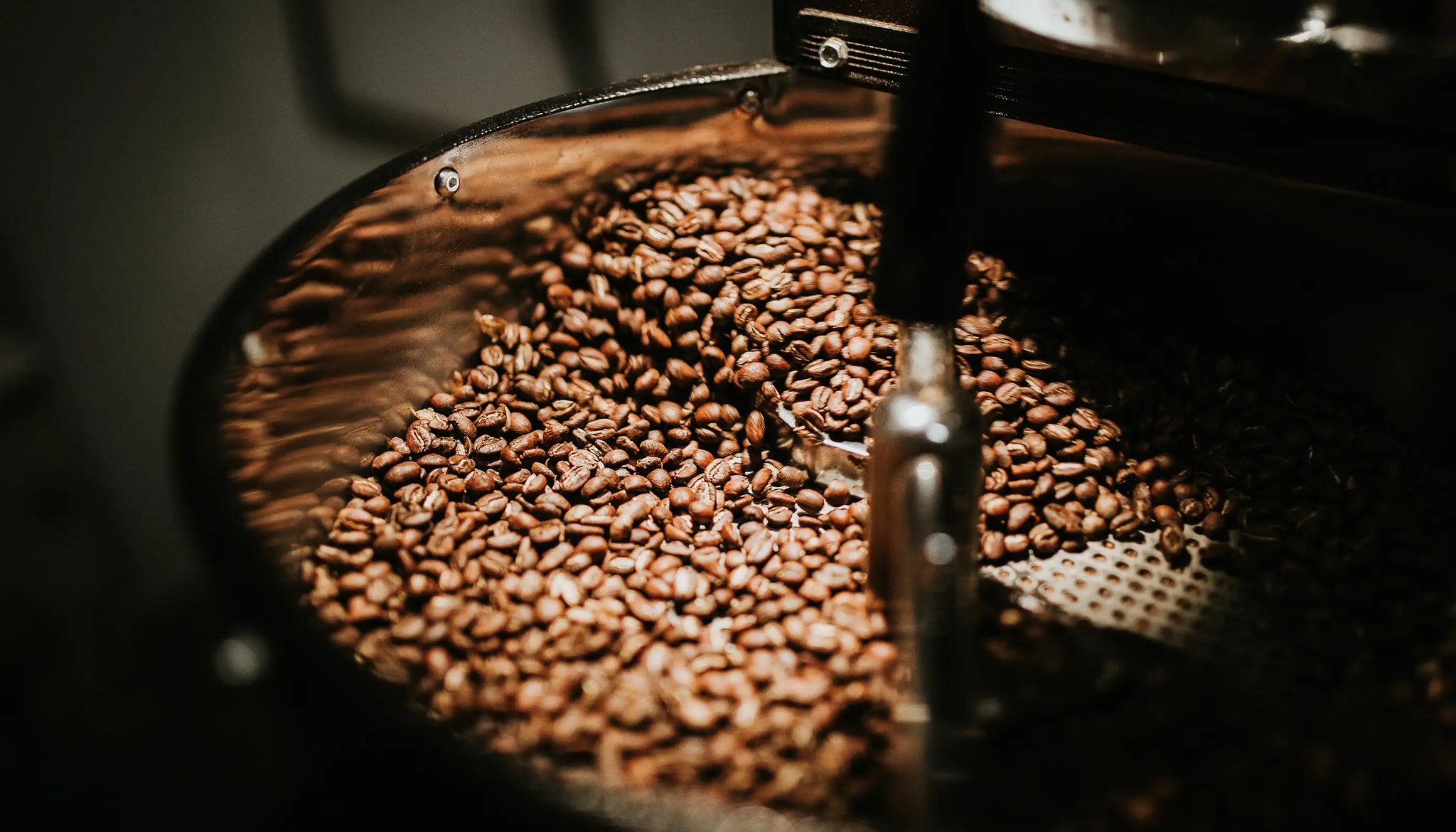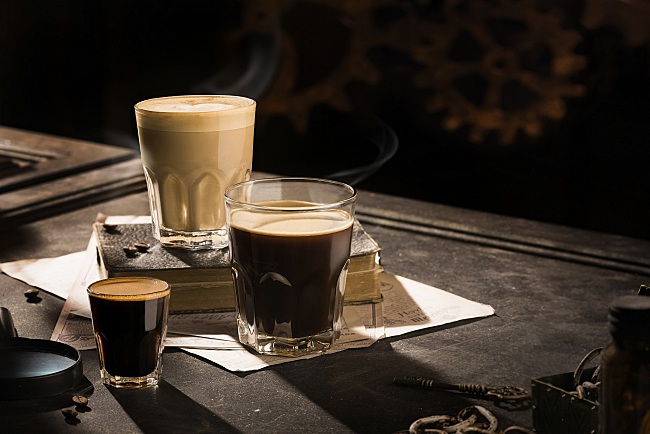SOE Single Origin Espresso – Showcasing Flavors from One Region
SOE Single Origin Espresso – Showcasing Flavors from One Region
Blog Article
Comprehending Coffee Beans: the Journey From Espresso to Blended Coffee Beans

The Origins of Coffee: An International Point Of View
While you might assume of coffee as a modern staple, its beginnings map back centuries, intertwining with societies throughout the globe. The story starts in Ethiopia, where tale states a goat herdsman named Kaldi found the invigorating effects of coffee beans after seeing his goats frolicking energetically after consuming them.
As profession routes expanded, coffee made its way to Europe in the 17th century, swiftly obtaining appeal. Each culture added its distinct spin to coffee prep work, improving its history.
Farming and Harvesting of Espresso Beans
As coffee's trip developed, the emphasis shifted to the cultivation and harvesting of certain bean selections, specifically those used for espresso. You'll find that espresso beans commonly originate from Arabica or Robusta plants, each offering distinct flavors. The optimal expanding conditions consist of high elevations and rich, well-drained soil, which boost the beans' high quality.
During the harvest, selecting techniques differ. In some regions, employees hand-pick ripe cherries, making sure only the best fruit goes to handling. In various other locations, mechanical farmers are made use of, specifically on bigger farms. Timing is crucial; you wish to gather when the cherries reach peak perfection for optimum taste.
When gathered, the beans are gotten ready for processing, which is essential in determining their last preference. Comprehending the cultivation and collecting procedures gives you understanding right into what enters into your favorite coffee, enriching your appreciation for each and every cup.
Handling Methods: From Cherry to Bean
Since you've found out about collecting espresso beans, let's discover exactly how those cherries change into the coffee beans you enjoy. You'll see how various harvesting techniques effect flavor, complied with by the important actions of fermentation and drying out. Finally, we'll damage down the milling and grading process that identifies your coffee's quality.
Harvesting Techniques Discussed
When it comes to coffee, understanding harvesting strategies is crucial, since they directly impact the flavor and quality of the beans you enjoy. Selective picking involves hand-picking only ripe cherries, guaranteeing you obtain the ideal top quality beans. Inevitably, the choice of harvesting technique can substantially affect your coffee experience, so it's worth knowing exactly how those beans made it to your mug.
Fermentation and Drying
After gathering, the next actions in handling coffee beans play a substantial duty fit their flavor. You'll find that fermentation is essential, as it aids damage down the mucilage bordering the beans, boosting their preference account. Depending on the method, this process can last from a few hours to a number of days, with differing outcomes based upon temperature and humidity.
Sun-drying permits the beans to soak up flavors from the environment, while mechanical drying assurances constant wetness levels no matter of weather condition. Appropriate drying is important to prevent mold and preserve the beans' quality, ultimately influencing your mug of coffee.
Milling and Grading Refine
As fermentation and drying out set the stage for taste growth, the milling and grading procedure warranties that only the best coffee beans make it to your mug. This phase involves removing the outer layers of the coffee cherry, including the parchment and husk. Top quality beans get a higher quality, resulting in a richer coffee experience.
Toasting Strategies: Opening Flavor Prospective
When you roast coffee beans, the approach you choose can drastically influence the flavor account. Recognizing the relationship in between time, temperature level, and toasting strategies is key to revealing the capacity of your brew. Let's check out how these components integrated to develop the excellent mug.
Toasting Methods Discussed
While you could think that all coffee roasting techniques produce the exact same outcomes, the fact is that each strategy discloses special taste potentials in the beans. Drum roasting uses a revolving drum to uniformly distribute heat, boosting caramelization and generating a balanced flavor. Air roasting, on the other hand, circulates hot air around the beans, promoting a lighter roast with noticable acidity.

Influence on Flavor Account
Various roasting techniques not just influence the procedure but likewise substantially affect the taste profile of the coffee beans. When you select a light roast, you'll experience intense acidity and floral notes, showcasing the bean's origin. On the other hand, a tool roast balances acidity with sweet taste, frequently exposing chocolatey touches. Dark roasts, on the various other hand, bring out strong, great smoky tastes, sometimes masking the bean's special characteristics. Each method discloses different oils and compounds, bring about a wide variety of tastes. By experimenting with different roasting designs, you can find which accounts resonate with your taste. Recognizing these subtleties helps you value the artistry behind your mug of coffee, boosting your general experience with every sip.
Time and Temperature Variables
To release the complete taste possibility of coffee beans, both time and temperature during the roasting procedure play significant roles. When toasting, you'll locate that greater temperatures can rapidly establish flavors, however if you hurry it, you might finish up with burnt notes. Conversely, lower temperatures enable a more steady flavor advancement, showcasing the beans' one-of-a-kind qualities.

Timing is equally as vital; prolonging the roast also long can cause a loss have a peek here of acidity and illumination, while too brief a roast might leave the beans underdeveloped. Locating that sweet place needs technique and trial and error. By changing these factors, you can expose the rich, complicated tastes concealed within each bean, creating a genuinely remarkable coffee experience.
The Art of Mixing: Crafting Unique Coffee Accounts

Beginning by selecting a base coffee that gives a solid foundation. Choose corresponding beans to boost certain flavor notes. For example, a visit the site brilliant Ethiopian bean can bring fruitiness, while an abundant Brazilian coffee adds body. Testing is crucial-- do not hesitate to change ratios up until you find your ideal profile.
As you mix, keep in mind that each combination narrates. You're not simply making coffee; you're producing an experience. So, take your time, preference regularly, and enjoy the journey of discovering your trademark blend.
Developing Approaches: Just How Prep Work Impacts Flavor
Blending coffee opens up a domain name of taste opportunities, however exactly how you brew that blend can substantially affect your last cup. On the other hand, a pour-over highlights the coffee's clarity and brightness, ideal for showcasing fragile notes.
Espresso, with its high pressure, produces a focused shot that accentuates sweet taste and crema. If you like a lighter brew, think about a cold mixture method; it generates a smooth, much less acidic preference.
Readjusting variables like water temperature, grind size, and make time can change your coffee's profile. Accept the art of developing to discover the flavors concealed in your coffee blends.
The Future of Coffee: Sustainability and Advancement
As the coffee industry progresses, sustainability and innovation are ending up being essential for addressing environmental difficulties and meeting customer needs. You'll discover that more coffee business are adopting green methods, from sourcing beans morally to executing lasting farming strategies. These shifts not just help the world but additionally improve the top quality of the coffee you take pleasure in.
You might see developments like eco-friendly product packaging and water-saving developing techniques that lower waste. Advanced modern technology, such as blockchain, is likewise becoming preferred, ensuring transparency in the supply chain, which permits you to map your coffee back to its beginnings.
Additionally, buying neighborhood areas and supporting farmers with fair profession initiatives fosters a much more sustainable coffee environment. As you drink your following mug, bear in mind that your choices can contribute to a brighter future for coffee. By selecting sustainable brand names, you're not just appreciating a drink; you're making a positive influence on the globe.
Frequently Asked Inquiries
What Is the Distinction Between Arabica and Robusta Beans?
Arabica beans are smoother, sweeter, and have a higher level of acidity, while robusta beans are more powerful, more bitter, and consist of even more high levels of caffeine. You'll discover these differences in flavor and fragrance when making your coffee.
Just How Does Altitude Affect Coffee Bean Flavor?
Altitude influences coffee bean taste substantially. Higher altitudes create beans with brighter acidity and facility flavors, while lower altitudes typically produce beans that are much heavier and less nuanced. You'll observe these differences in your mug!
What Are the Health And Wellness Perks of Alcohol Consumption Coffee?
Drinking coffee can increase your energy, boost mental focus, and also enhance physical performance. It's abundant in antioxidants, may decrease the risk of my response particular diseases, and can advertise a much healthier metabolic process when eaten in moderation.
Can Coffee Beans Be Recycled for Brewing?
Yes, you can recycle coffee beans for brewing, but the taste may be weaker. If you appreciate experimenting, try recycling them in different methods, like cool brews or contributing to shakes for an extra kick.
Just how Should I Shop Coffee Beans for Freshness?
To maintain your coffee beans fresh, save them in a closed container in a great, dark location. Stay clear of exposing them to heat, light, or moisture, as these aspects can swiftly degrade their taste and scent.
Recognizing Coffee Beans: the Trip From Espresso to Blended Coffee Beans.
Currently that you've learned about harvesting coffee beans, let's explore just how those cherries transform into the coffee beans you like.When you roast coffee beans, the method you select can substantially influence the flavor account - Single Origin Espresso.While you could think that all coffee toasting approaches yield the same results, the fact is that each strategy exposes unique flavor possibilities in the beans.Various roasting approaches not just affect the procedure but also greatly influence the flavor profile of the coffee beans
Report this page